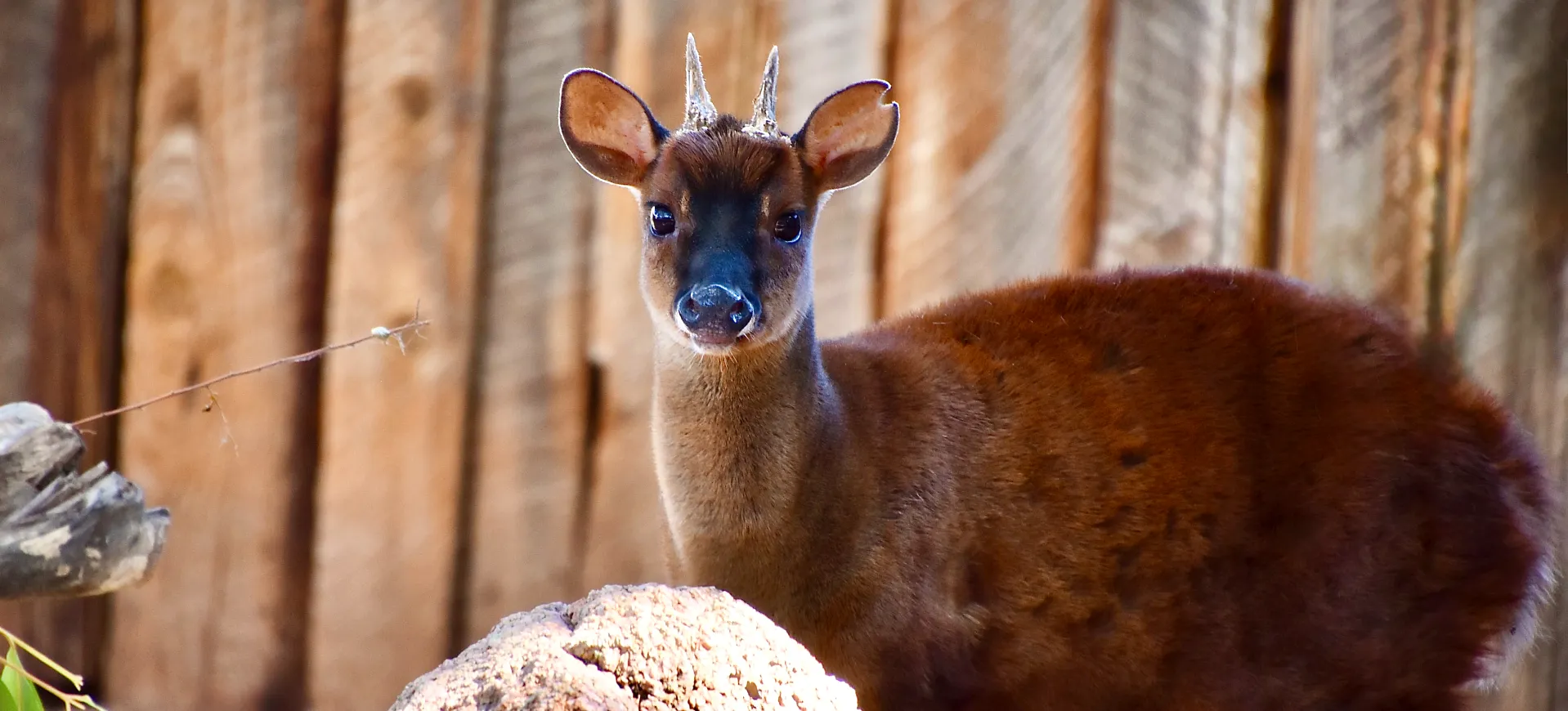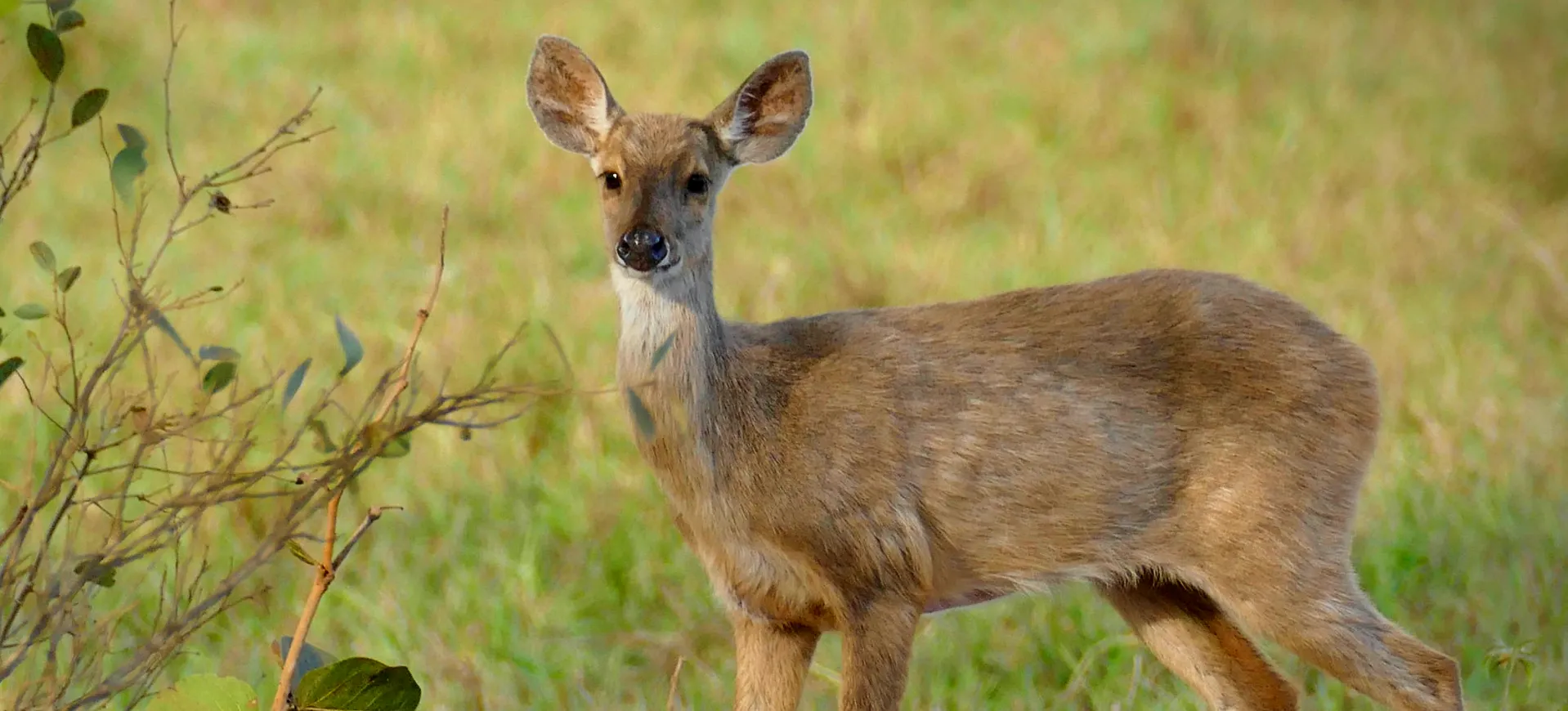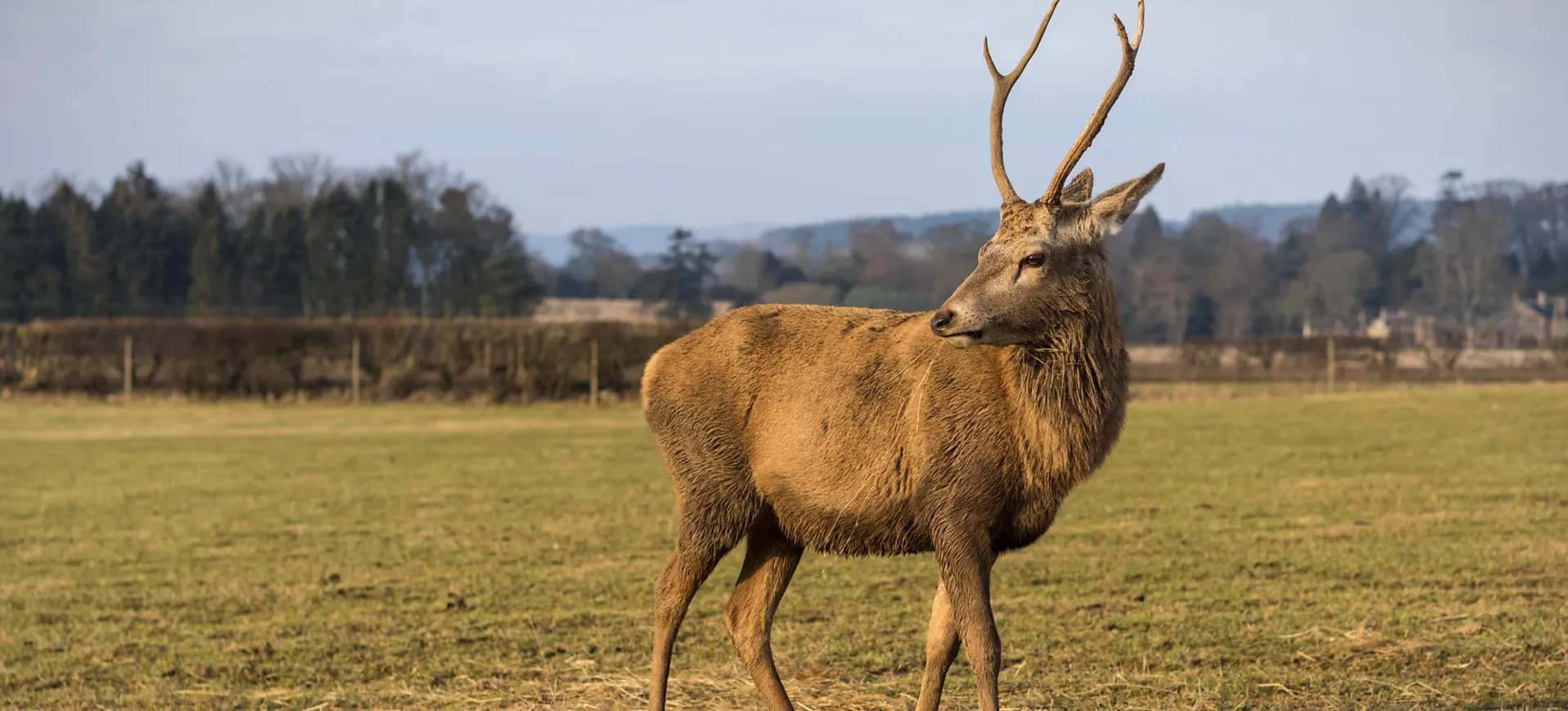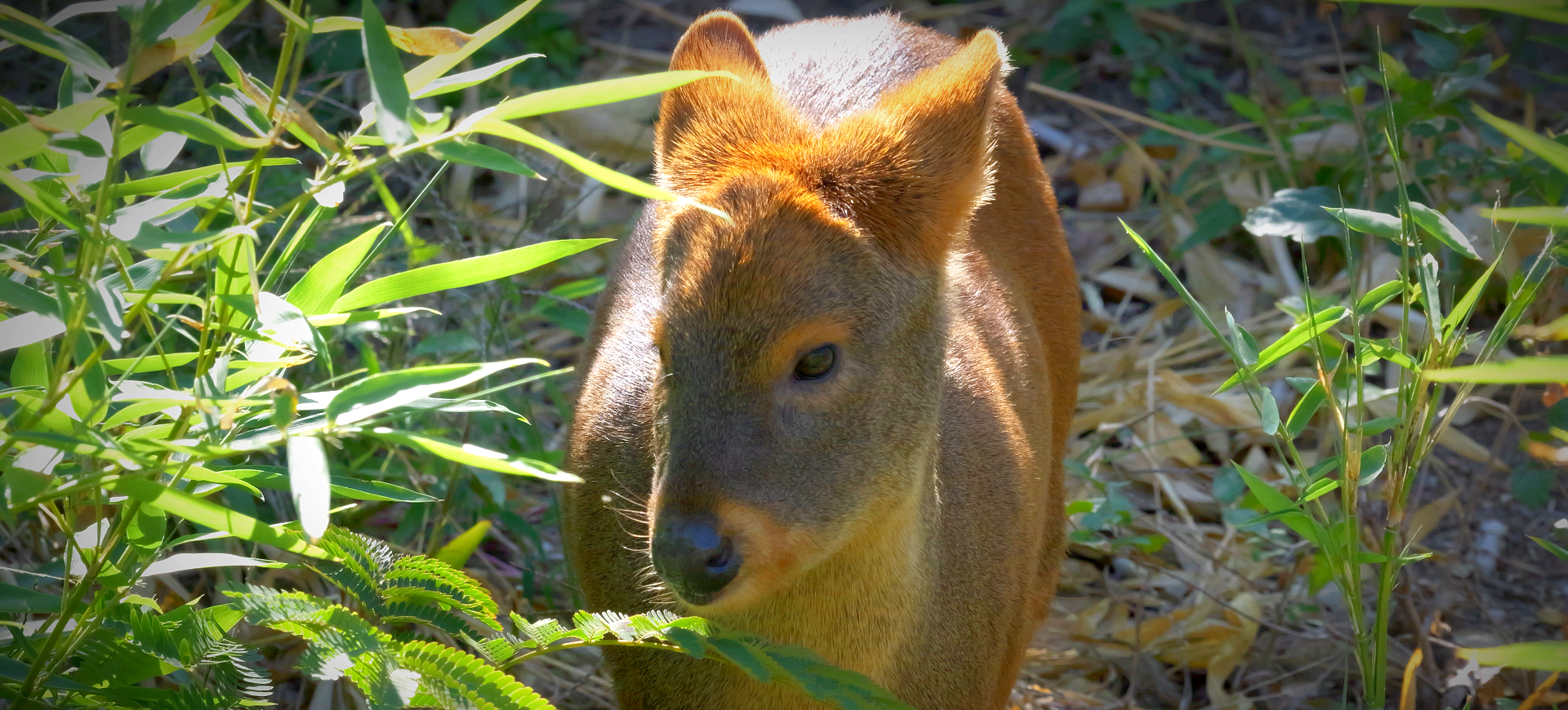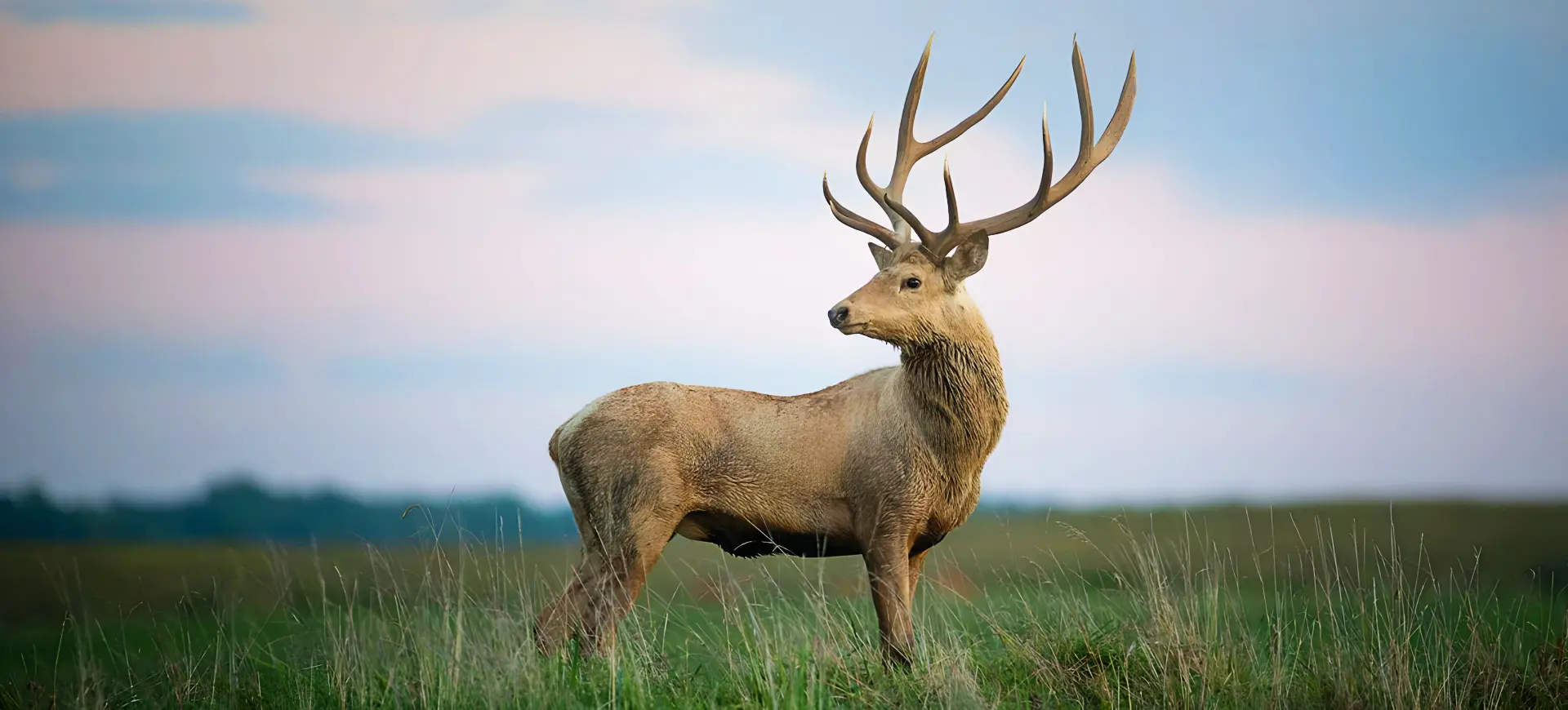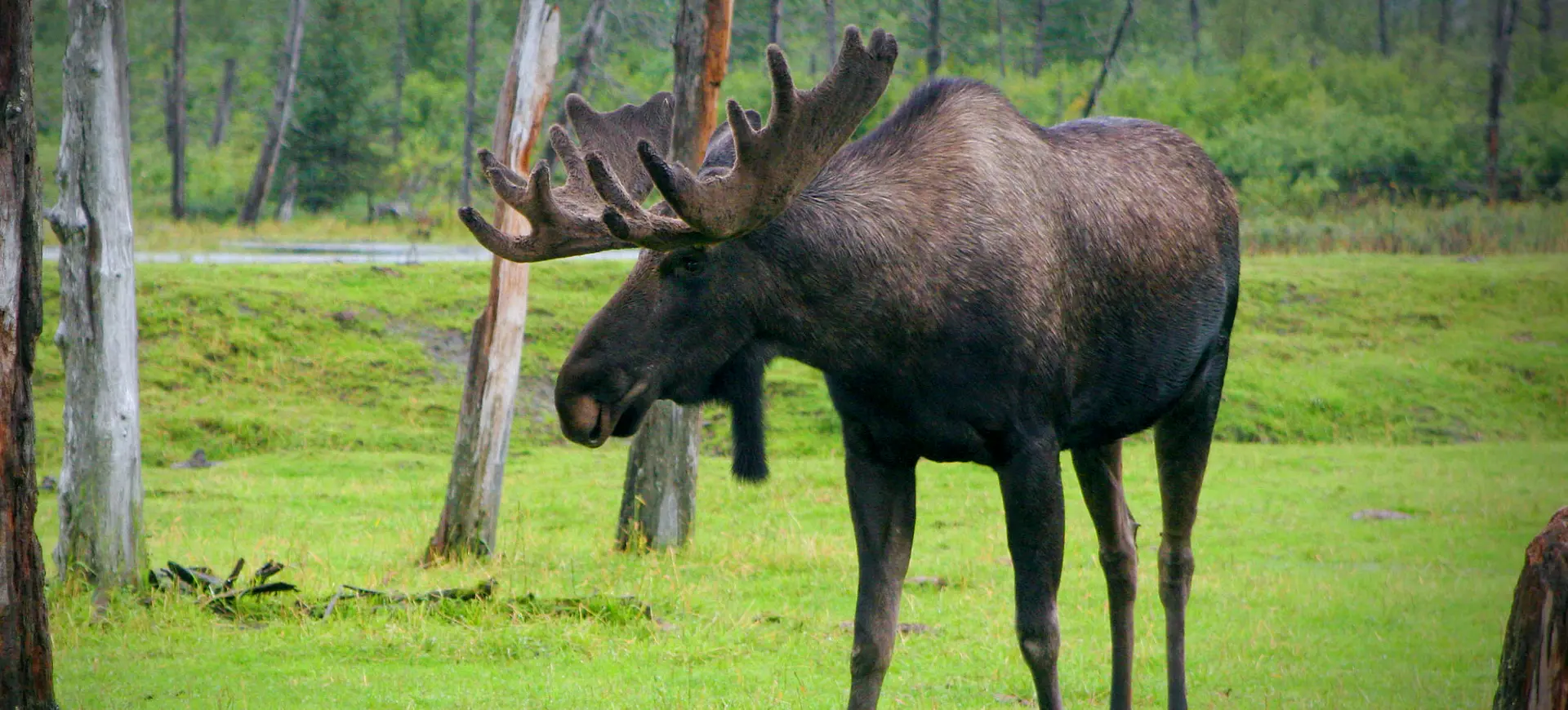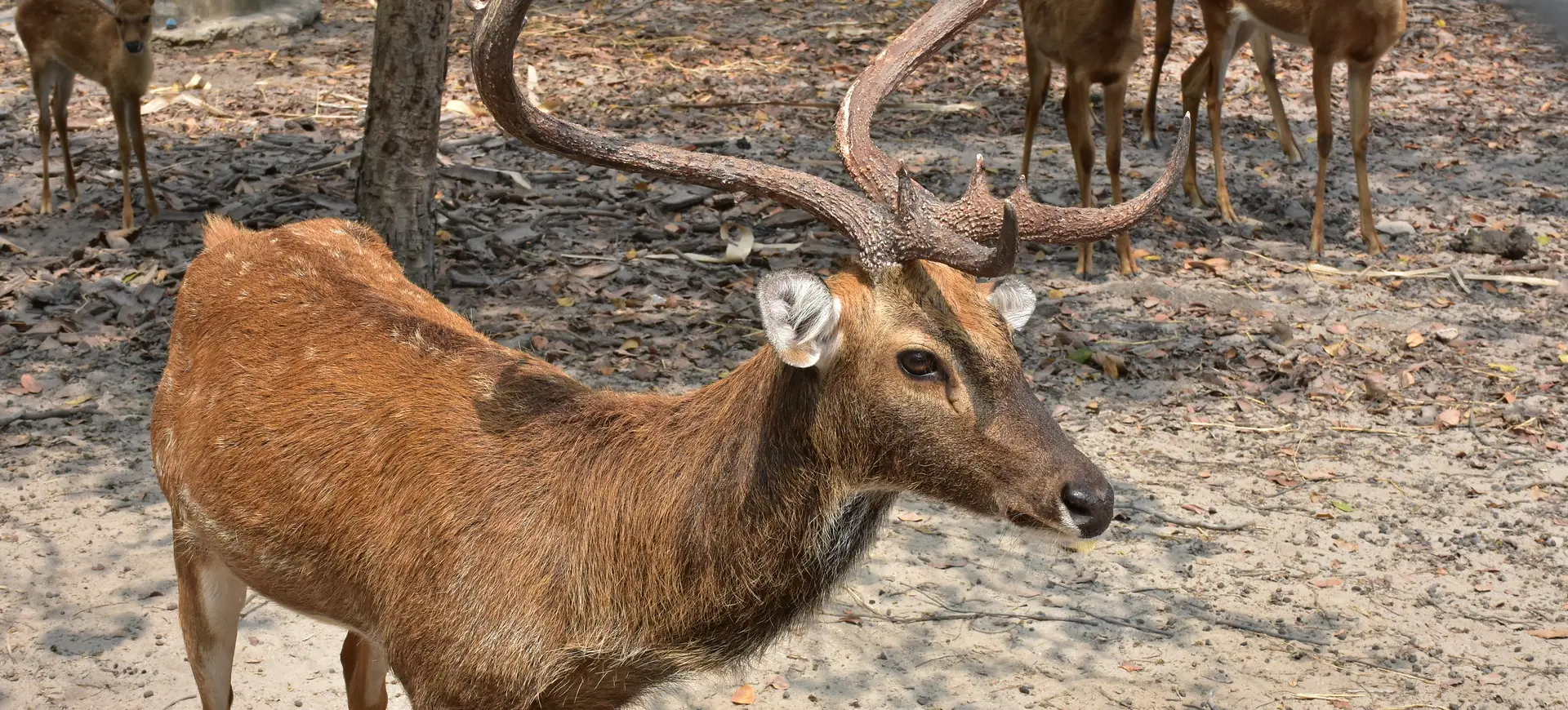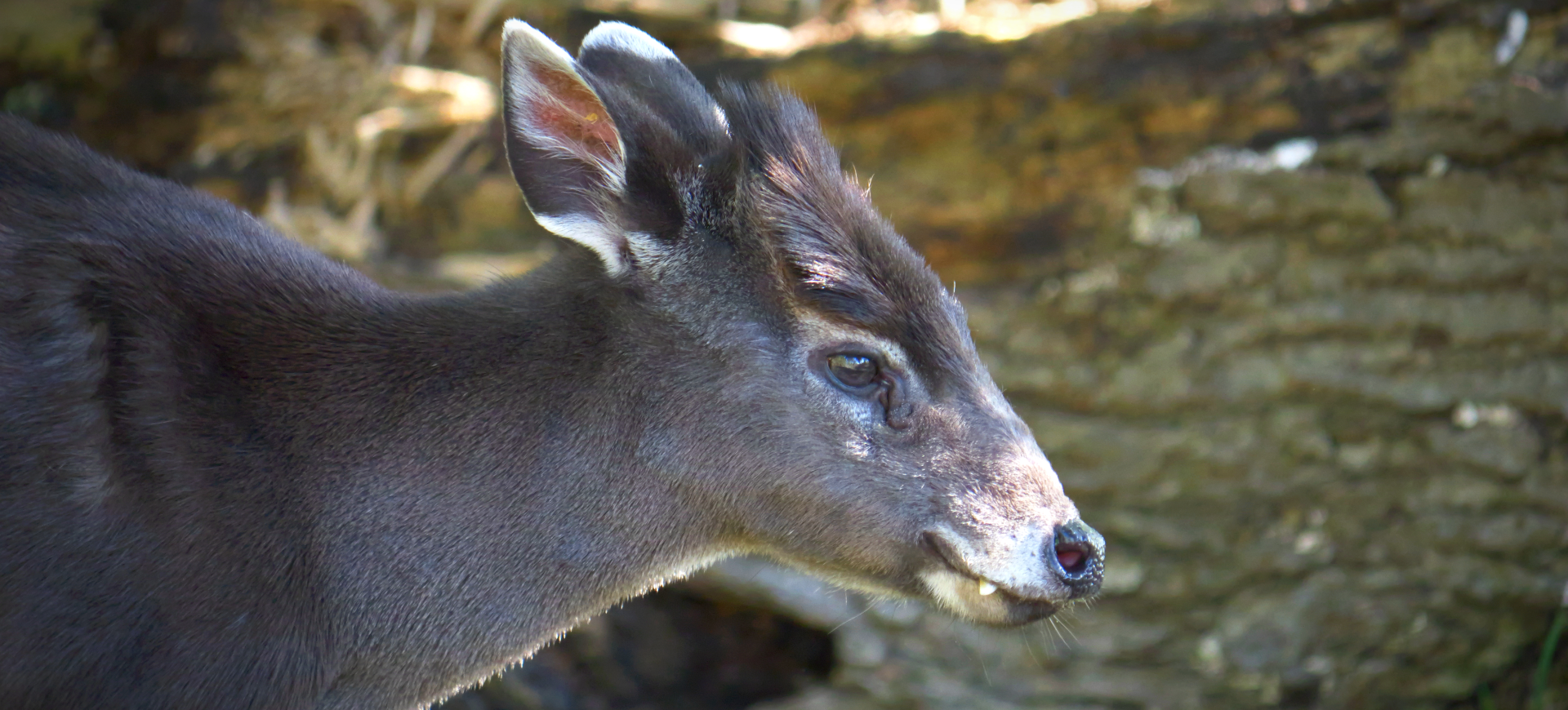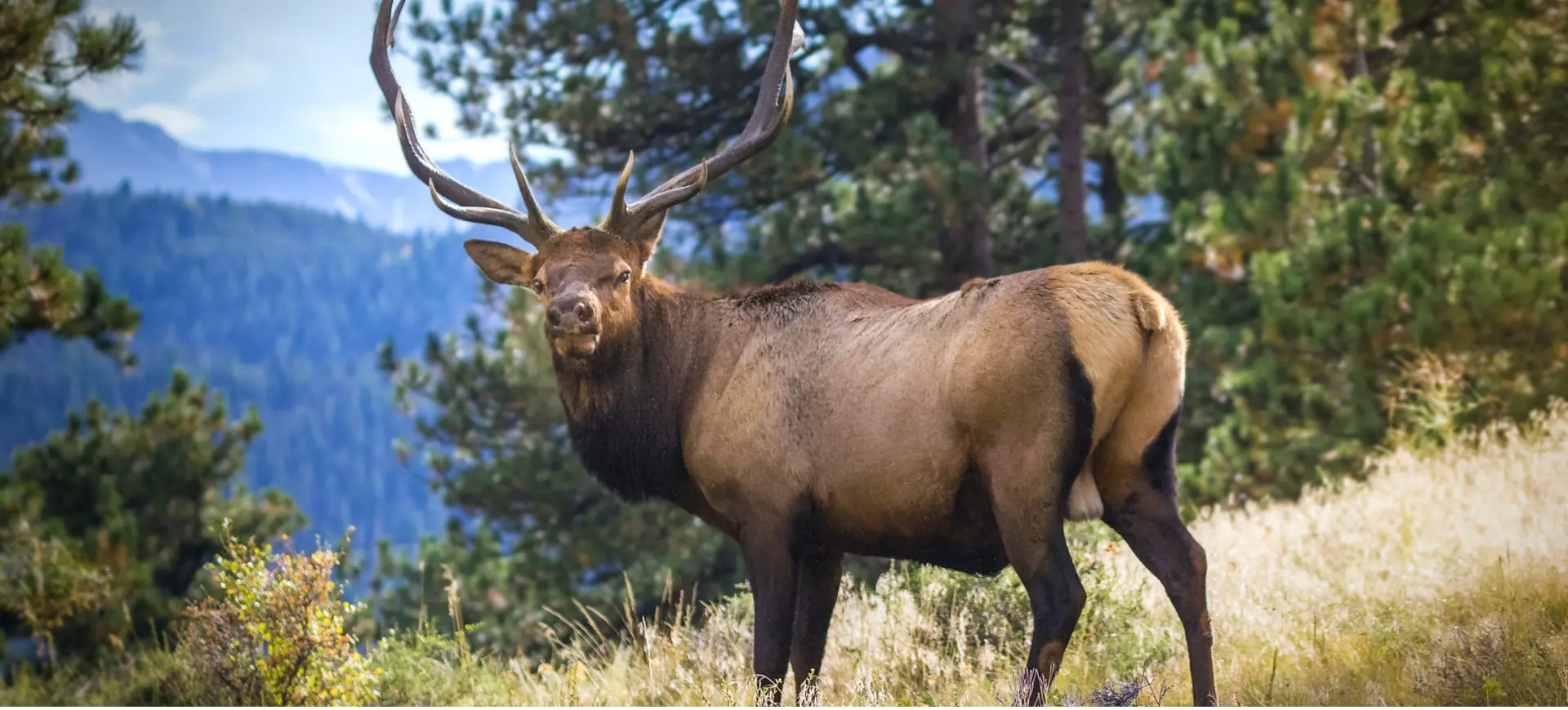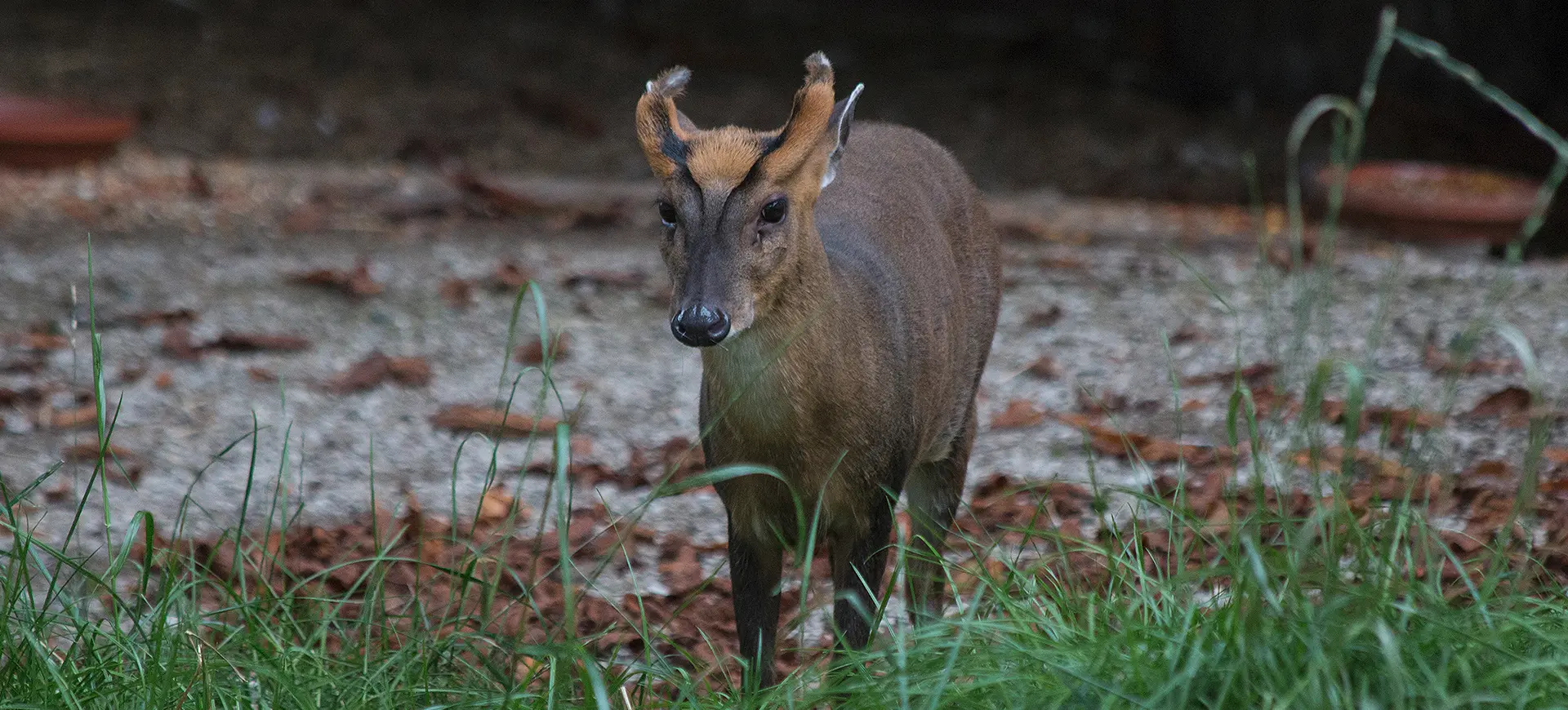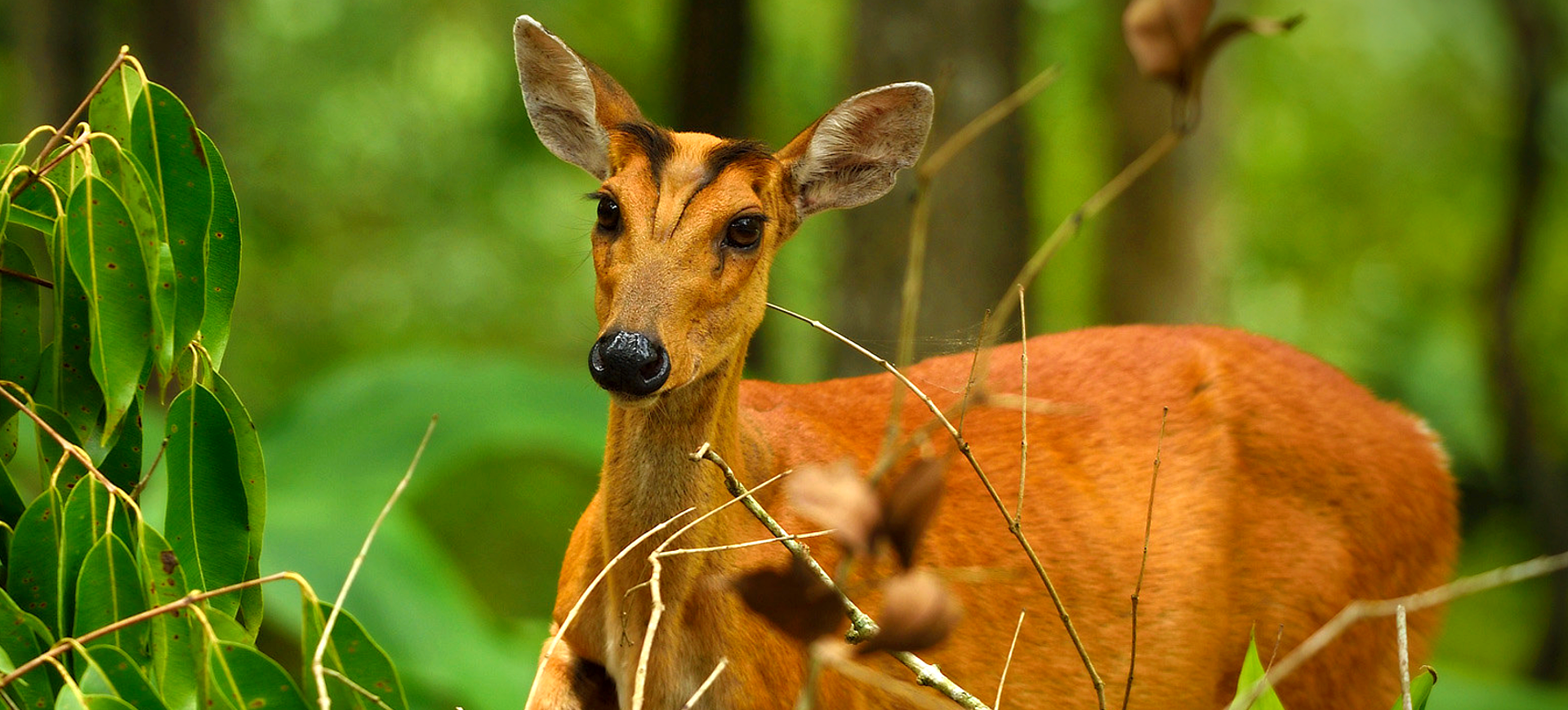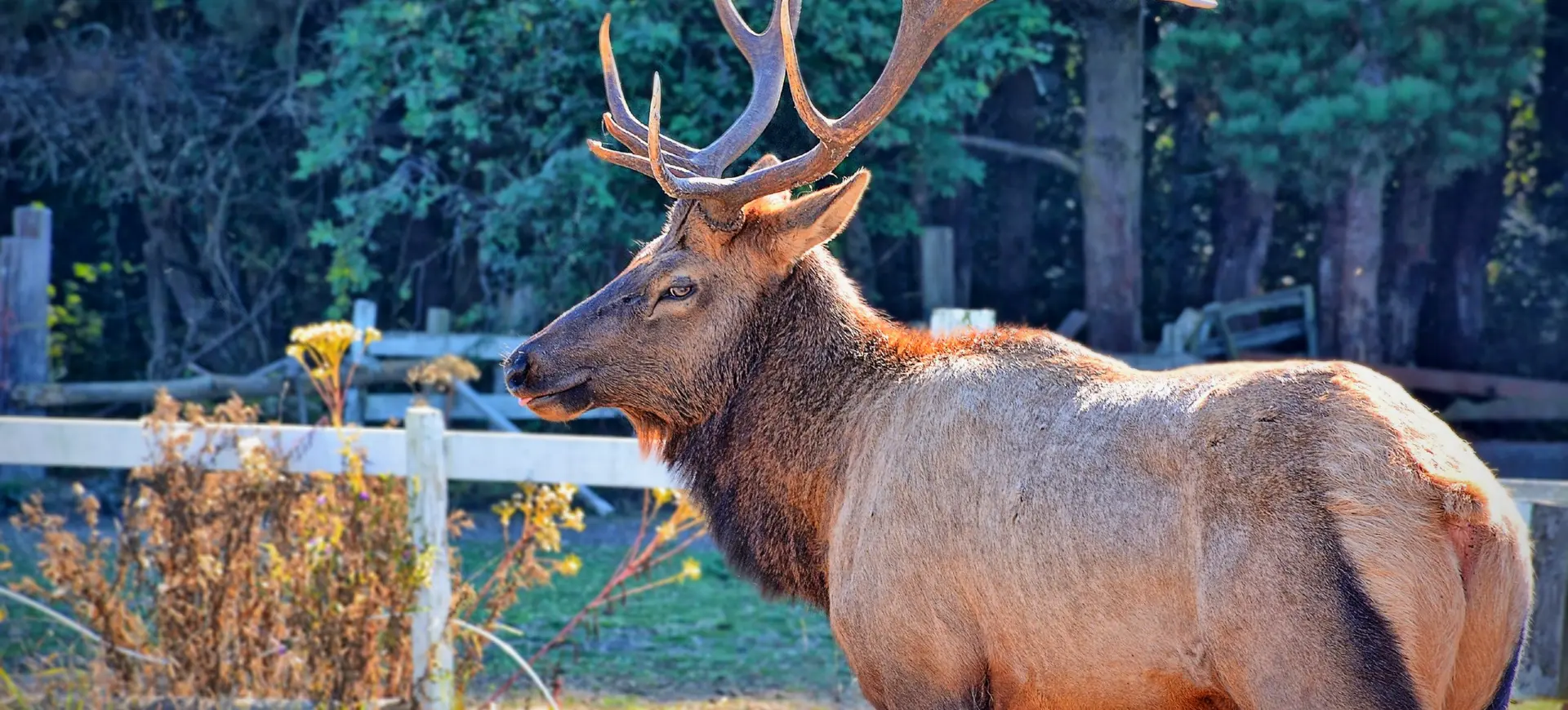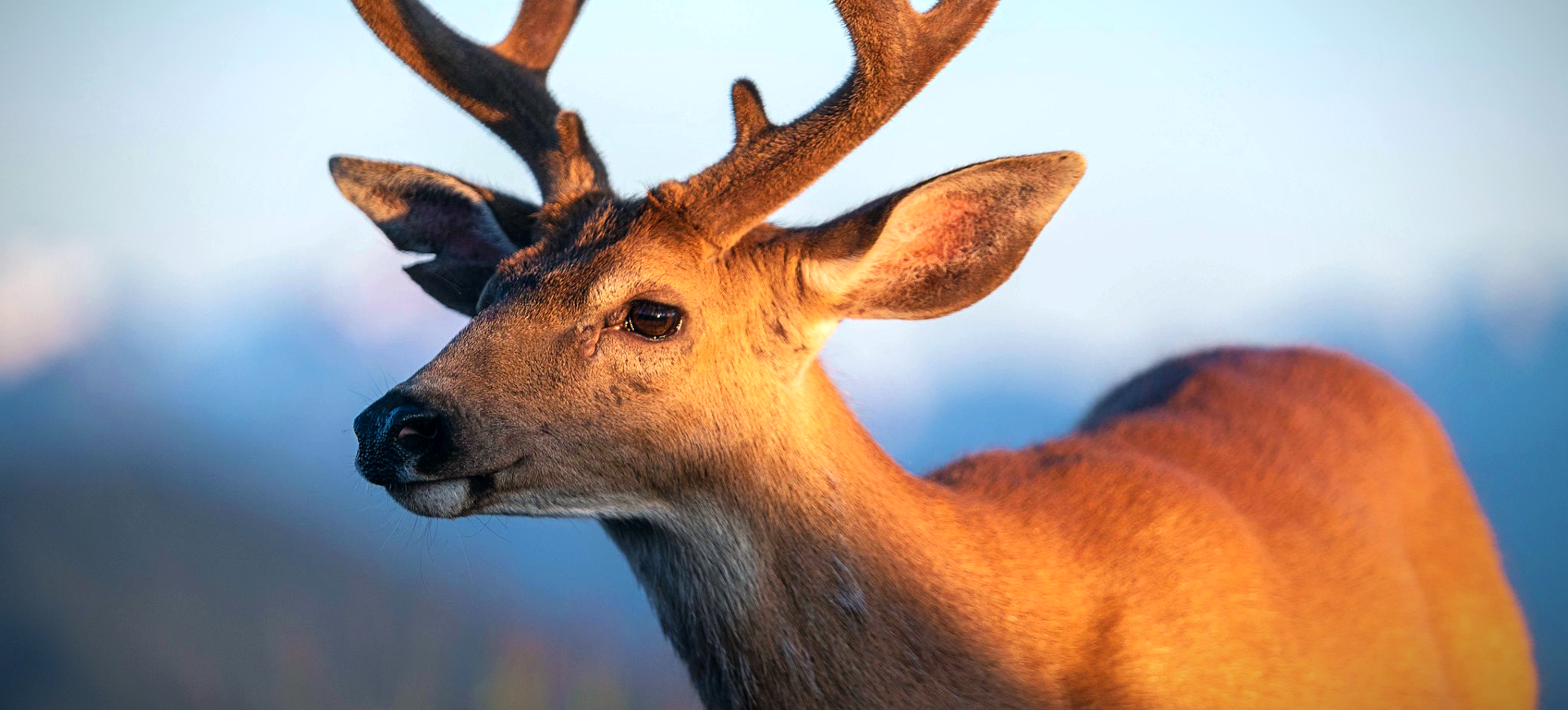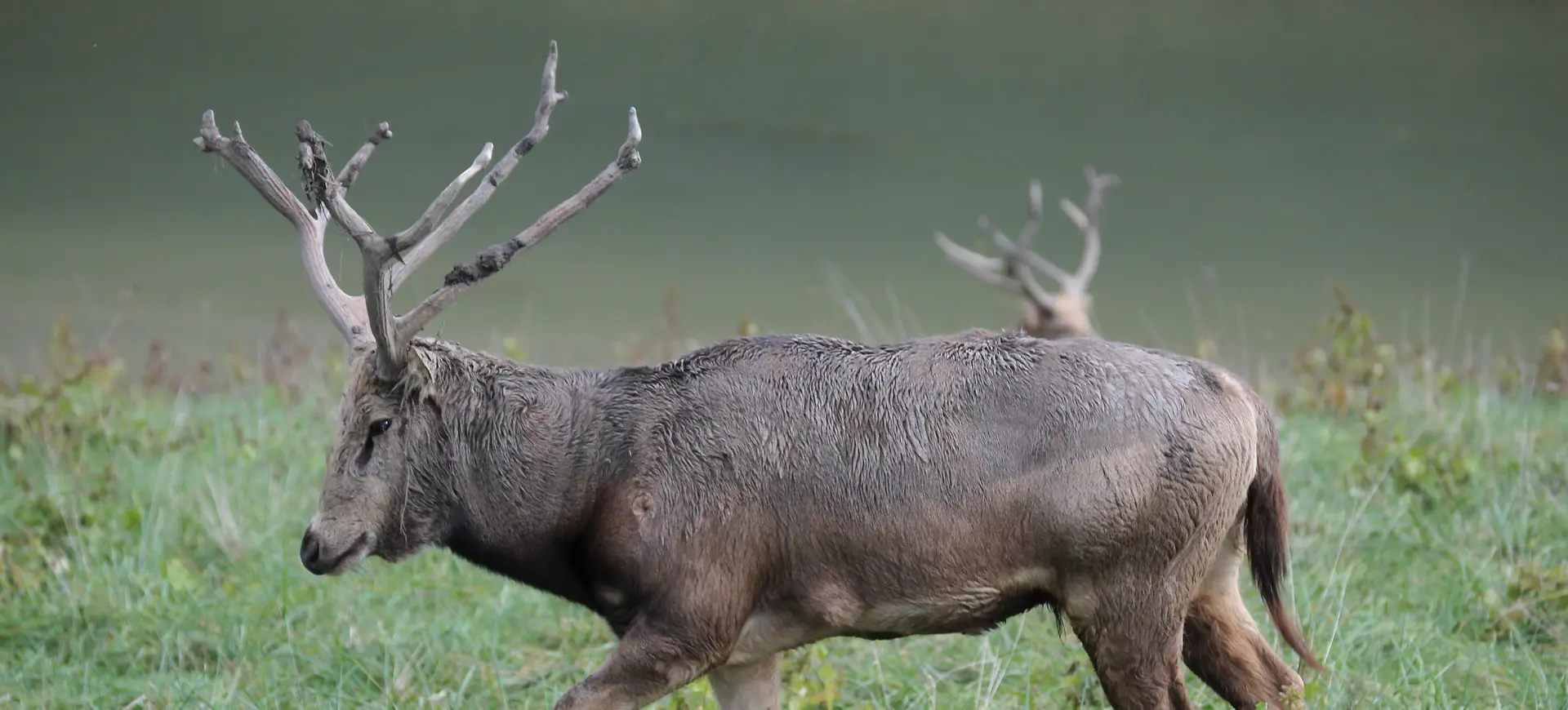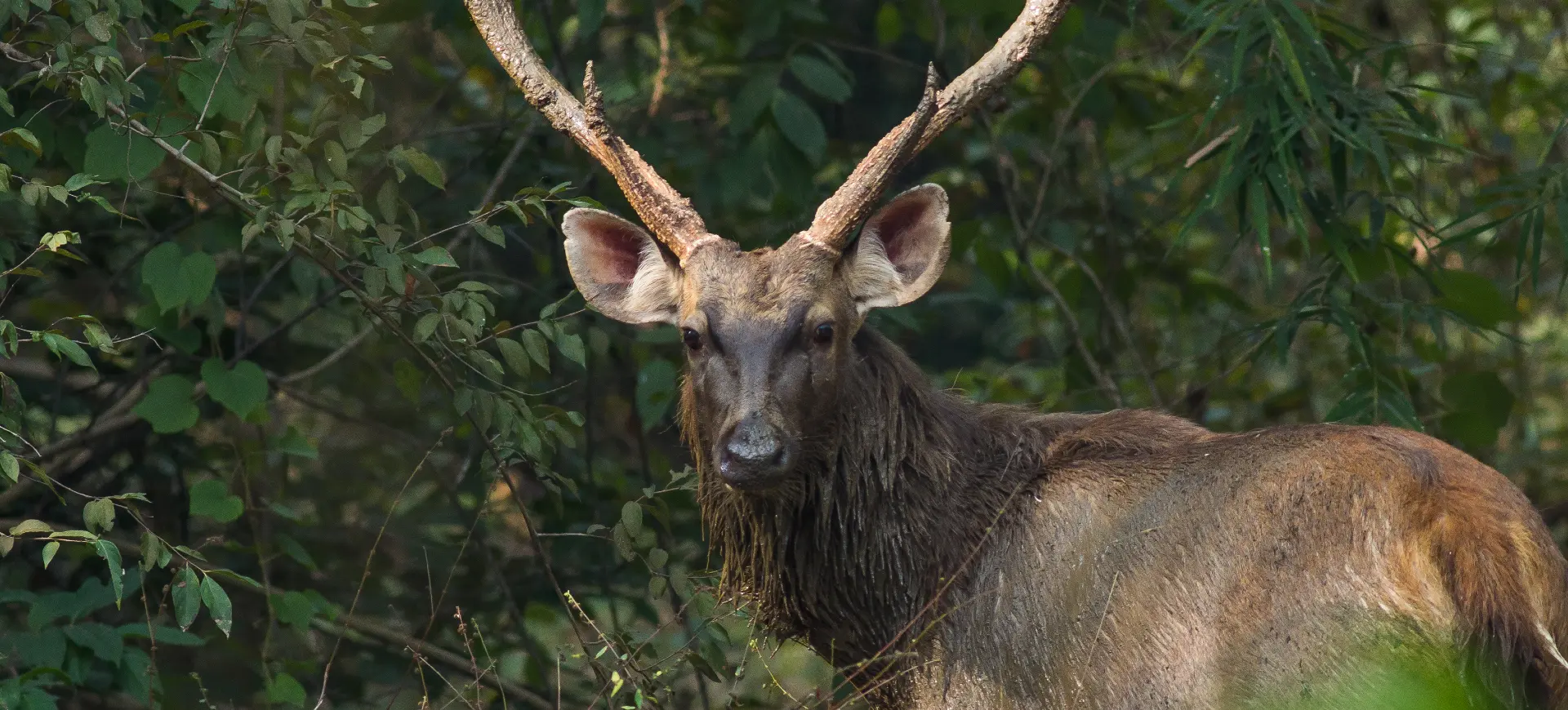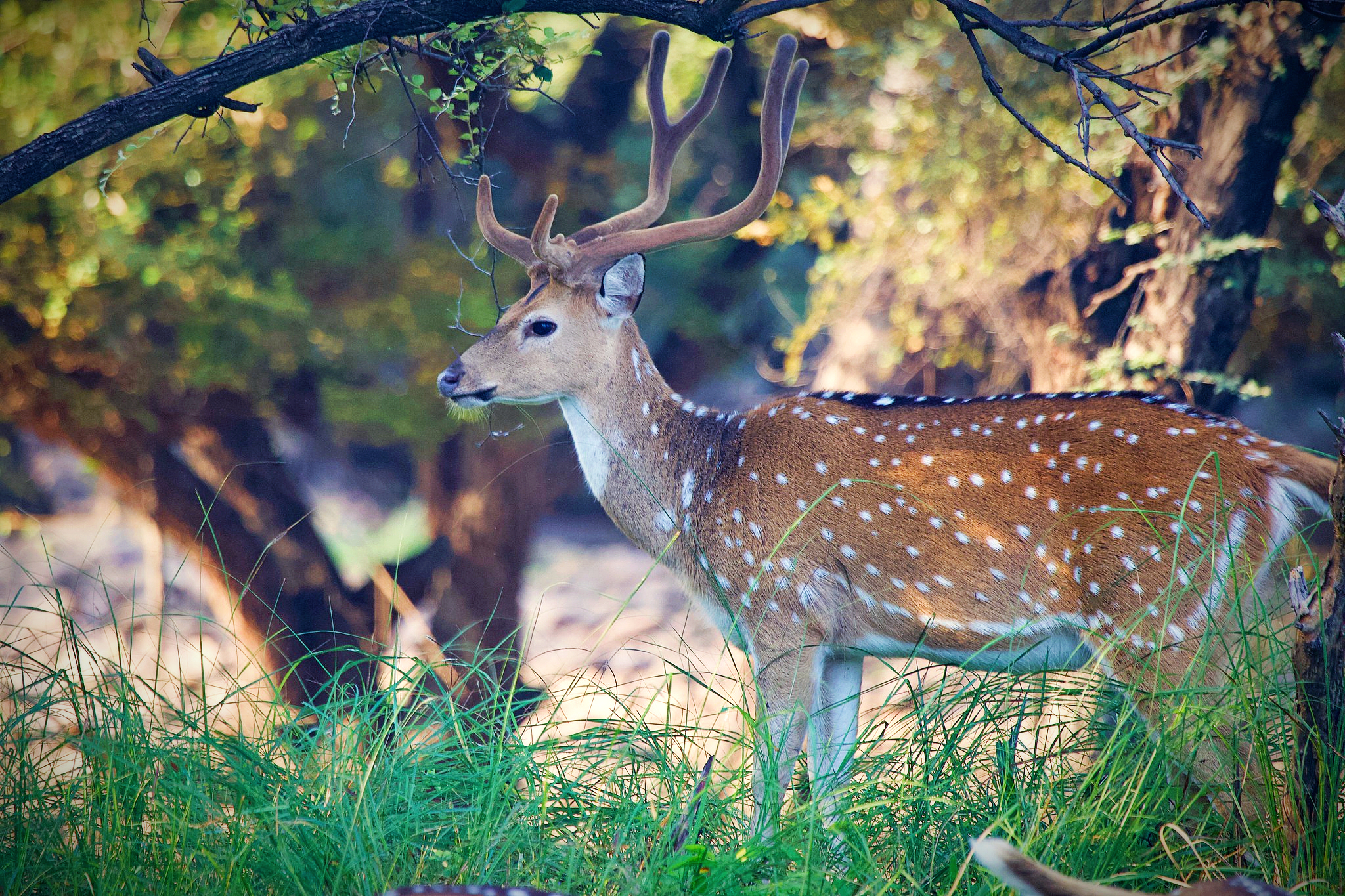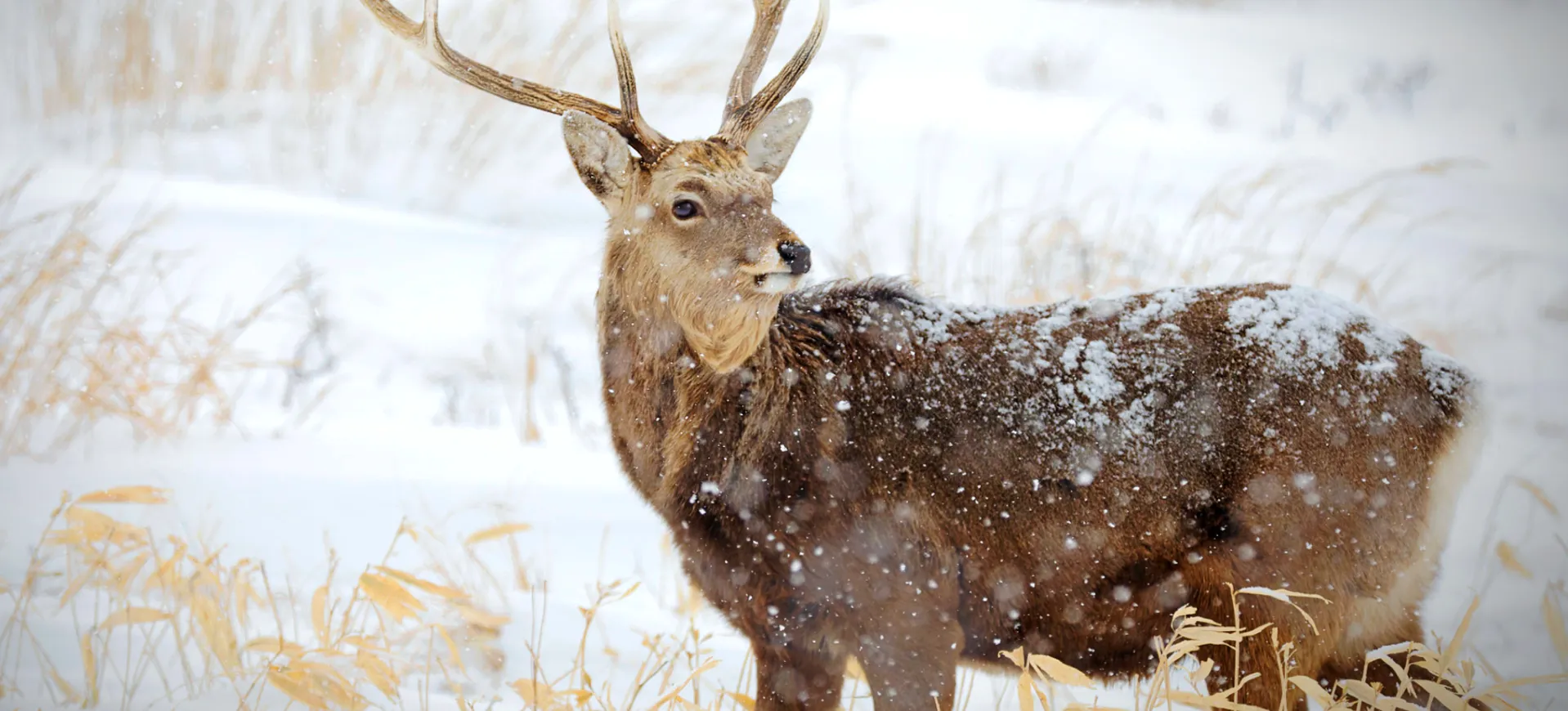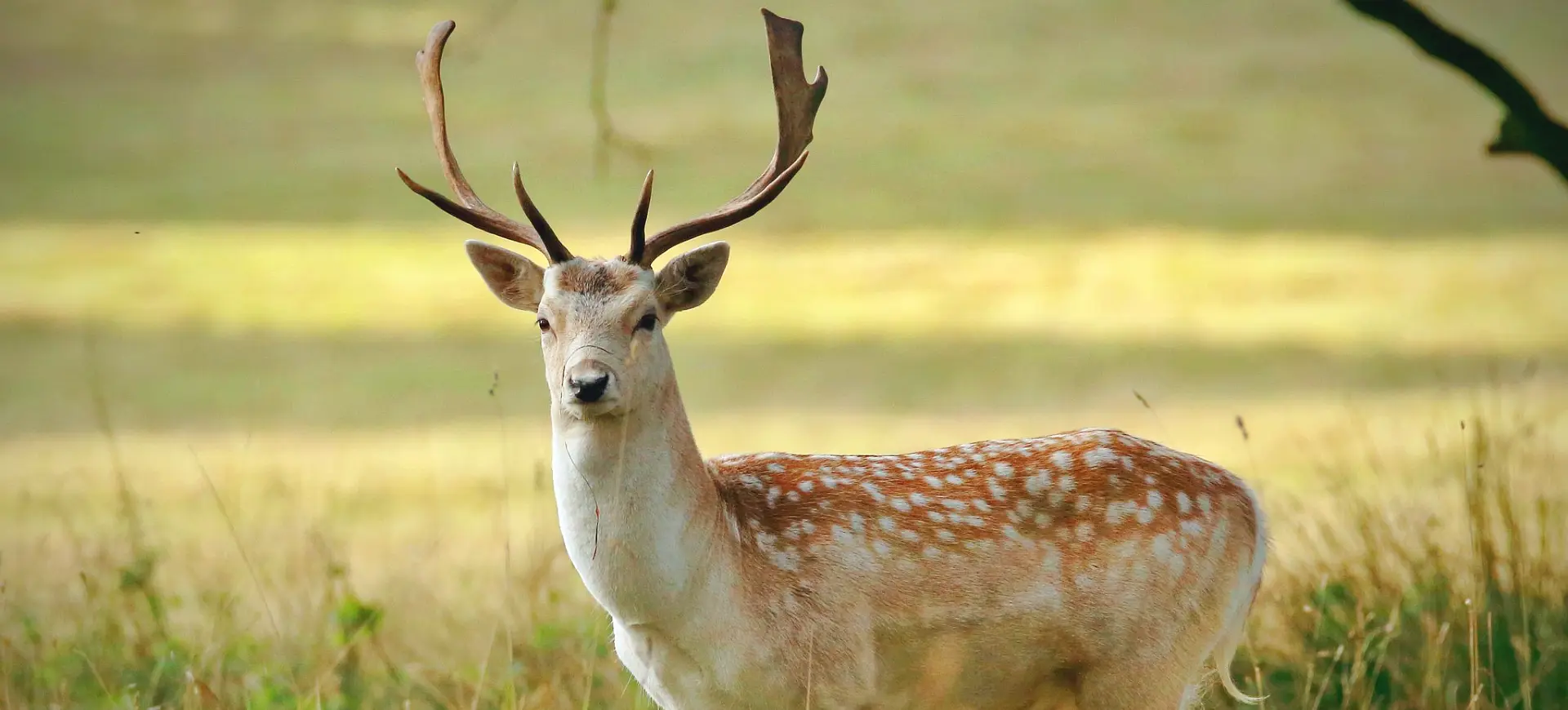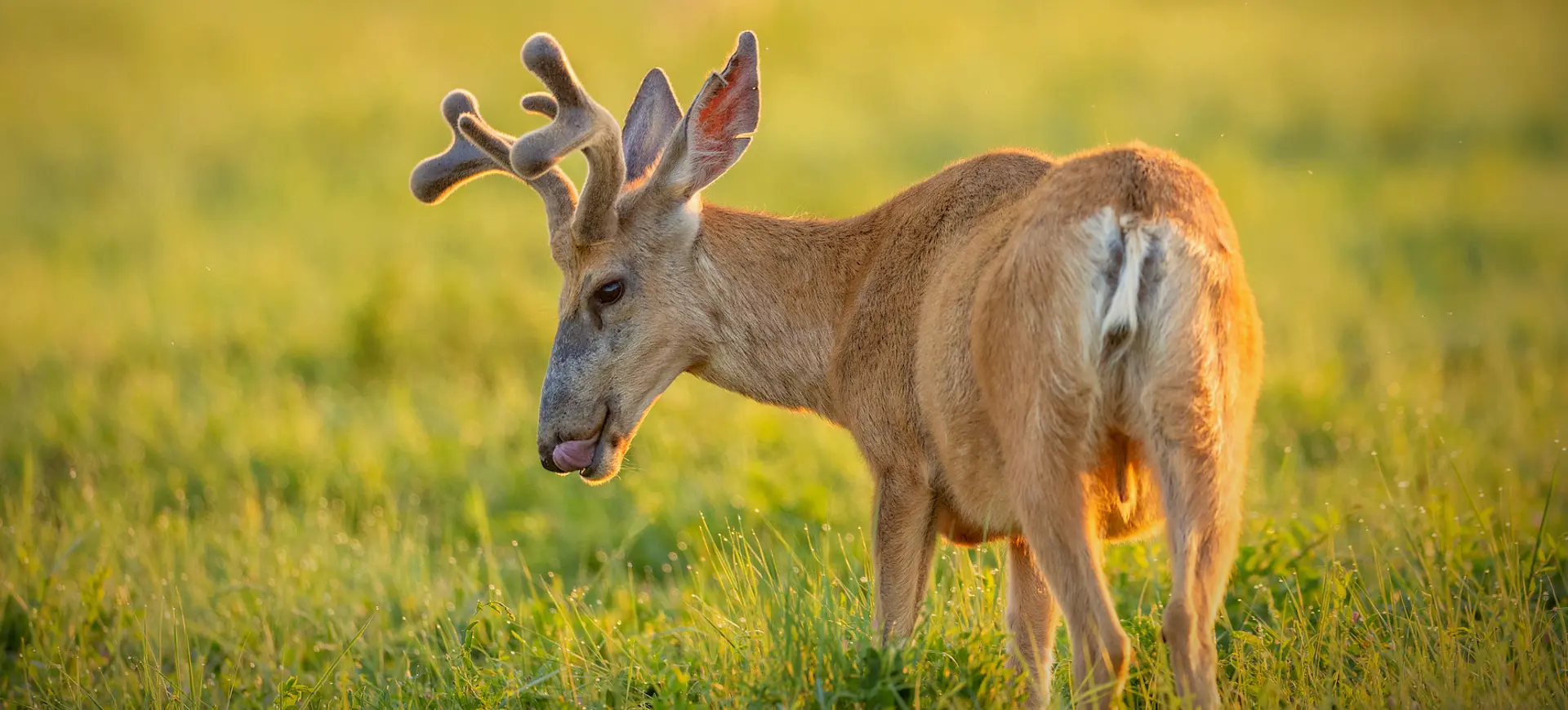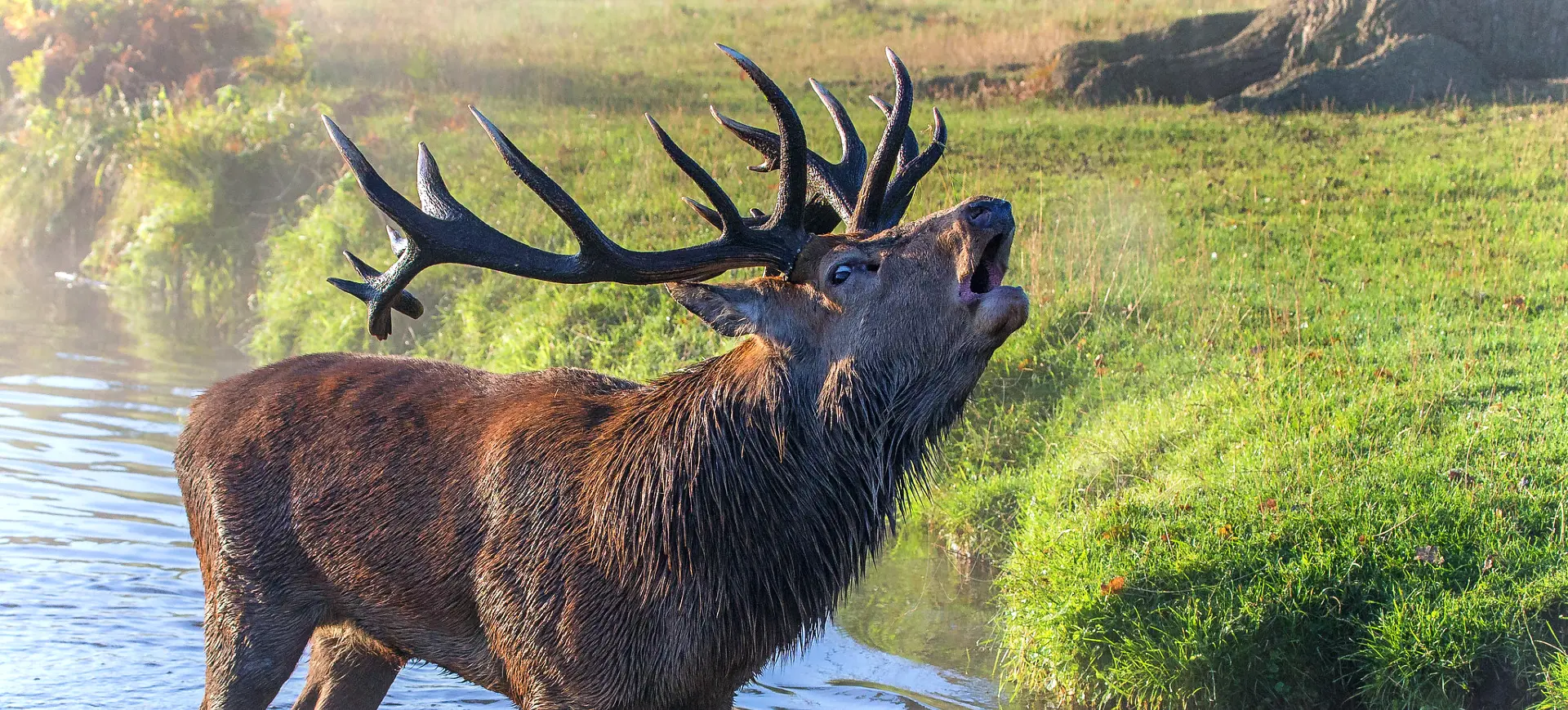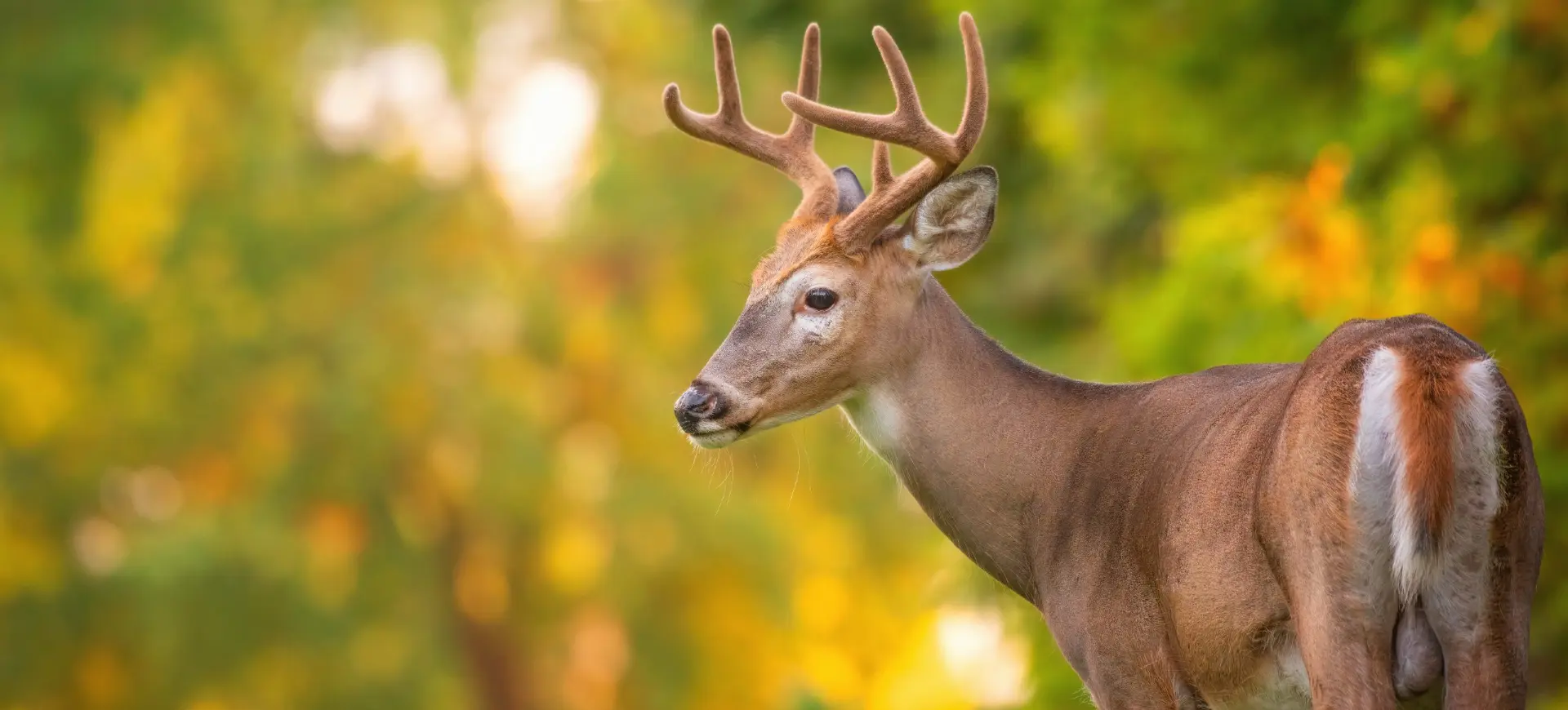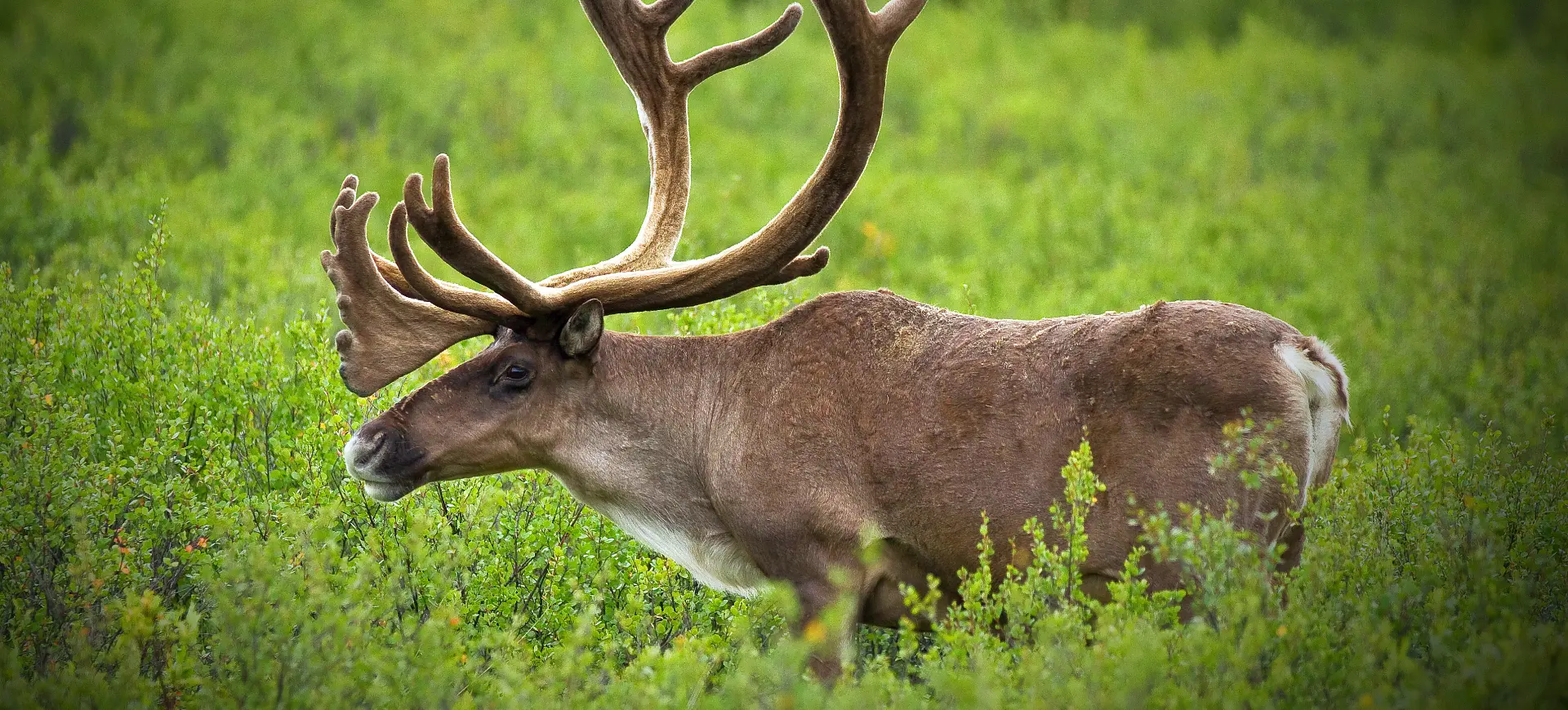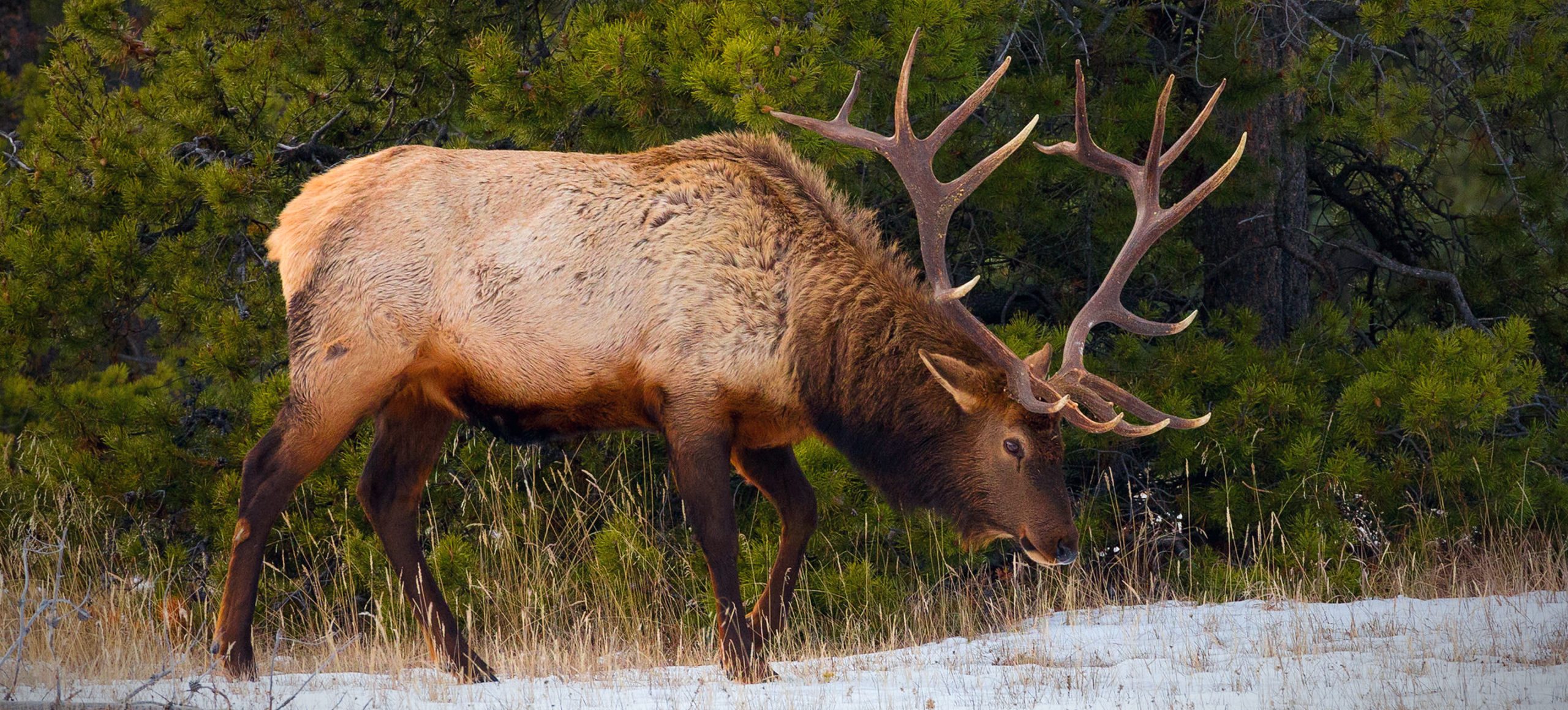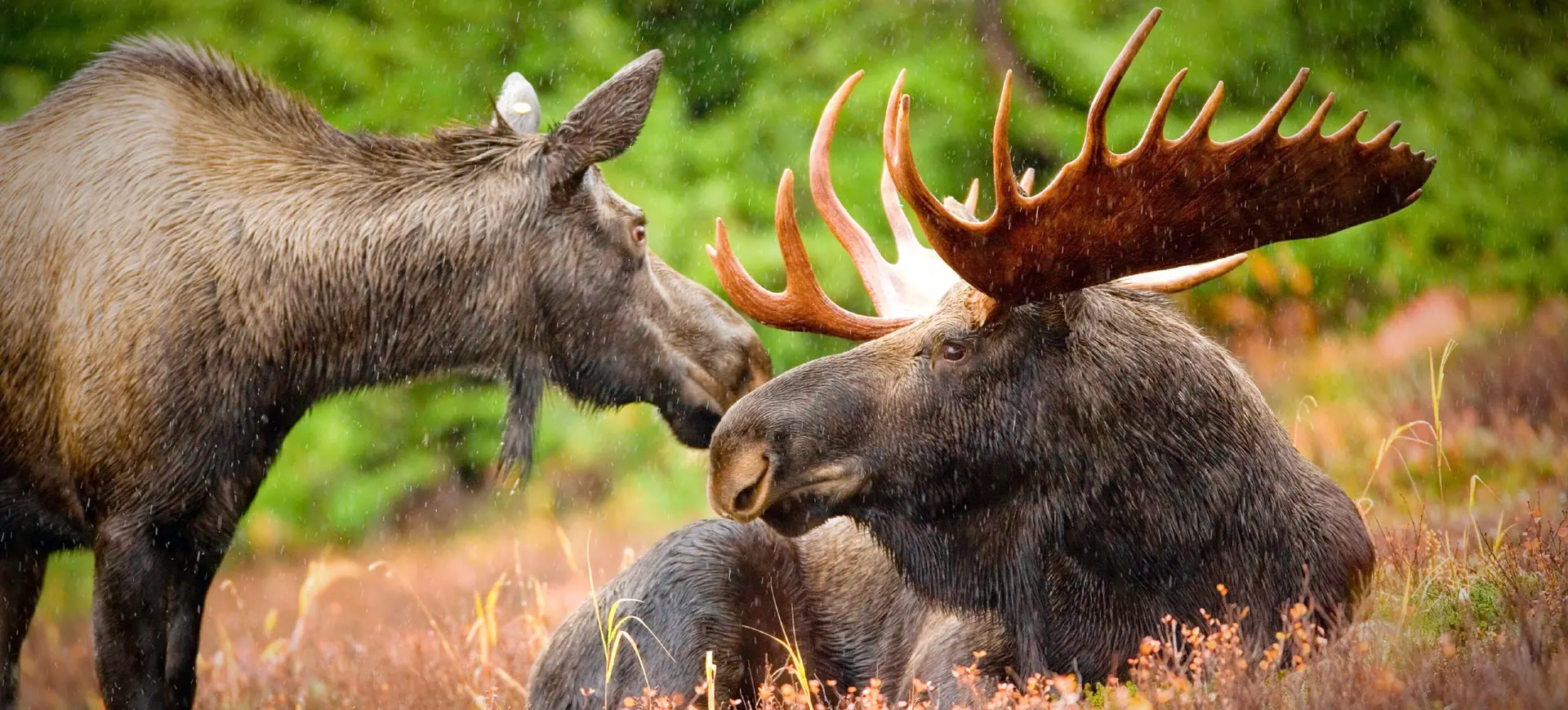Overview
Woodland caribou, a subspecies of the caribou (Rangifer tarandus), are uniquely adapted to life in the dense forest habitats of North America. Unlike their tundra-dwelling relatives, woodland caribou prefer the boreal forest, where they have developed distinct migratory patterns that are less extensive but crucial for accessing seasonal food sources. These caribou are characterized by their darker fur and larger body size, adaptations that help them navigate and survive in forested environments. They are solitary or form small groups, a behavior that contrasts with the large herds seen in other caribou populations.
Woodland caribou’s diet is specially adapted to their forest habitat, relying heavily on lichens found on the ground and in trees, which they can access even under deep snow. This diet allows them to exploit a niche within dense boreal forests, where other large herbivores may struggle to find sufficient food in winter. Their unique feeding behavior has significant implications for forest ecology, influencing the distribution and abundance of lichens and other vegetation within their range. The presence of woodland caribou is often an indicator of healthy, old-growth boreal forests, providing the necessary conditions for survival.
Conservation of woodland caribou has become a critical environmental issue due to their sensitivity to habitat disturbance. Logging, mining, and road construction can fragment their habitat, making it difficult for them to find food and evade predators. Climate change also poses a significant threat by altering the composition and structure of boreal forests. Efforts to conserve woodland caribou focus on protecting large tracts of undisturbed forest and managing human activities to minimize their impact on caribou populations and their habitat.
Taxonomy
Kingdom
Phylum
Class
Order
Family
Genus
Species
Sub Species
Type
RANGE
Current distribution:
Woodland caribou are found in the northern regions of North America, primarily in Canada and parts of the northwestern United States. Their distribution is closely tied to the extent of boreal forests, with populations spread out in a patchwork pattern reflecting the availability of suitable habitats. This distribution has contracted as logging, mining, and development activities have increased in recent decades, leading to habitat loss and fragmentation.
Conservation efforts focus on the current distribution of woodland caribou, with strategies to protect critical habitats and connect fragmented populations. Conservationists aim to support stable and sustainable woodland caribou populations across their natural range by ensuring the health and connectivity of boreal forests.
Physical Description:
Woodland caribou are distinguished by their dark brown fur, which provides camouflage in the shadowy boreal forest environment. They retain the characteristic large, sweeping antlers in all caribou, though the size and shape can vary significantly among individuals. These antlers are used by males in competition for mates and as a defense mechanism against predators. Their hooves are large and concave, providing support on soft ground and snow and enabling them to dig through snow to find food in winter.
Woodland caribou’s body size is larger than other caribou subspecies, with males weighing between 350 to 400 lbs (159 to 182 kg) and females between 175 to 260 lbs (79 to 118 kg). This size advantage helps them move through deep snow and navigate the rugged terrain of the boreal forest. Their eyes and ears are keenly adapted for detecting predators, a crucial survival trait in their predator-rich habitats. The thick fur not only insulates them against the cold but also muffles the sound of their movements, aiding in stealth.

Lifespan: Wild: ~15 Years || Captivity: ~20 Years

Weight: Male: 350-400 lbs (159-182 kg) || Female: 175-260 lbs (79-118 kg)

Length: Male: 48-78 in (120-198 cm) || Female: 48-72 in (120-183 cm)

Height: Male: 35-53 in (89-135 cm) || Female: 34-50 in (86-127 cm)

Top Speed: 50 mph (80 km/h)
Characteristic:
Native Habitat:
Woodland caribou inhabit the dense, coniferous boreal forests that stretch across North America. This vast biome provides the secluded environments and food sources that woodland caribou require. Within these forests, caribou prefer areas with a mix of old-growth stands and open spaces, offering feeding opportunities and protection from predators. Cold temperatures, deep snow in winter, and various terrains, from flatlands to rolling hills, characterize their habitat.
The dependence of woodland caribou on large, continuous areas of boreal forest makes them particularly vulnerable to habitat fragmentation. These forests buffer against predators and human disturbances, which can significantly impact caribou populations. Conservation of woodland caribou, therefore, involves protecting not just individual animals or herds but the larger ecosystem of the boreal forest.
Climate Zones:
Biomes:
WWF Biomes:
Biogeographical Realms:
Continents:
Countries:
Diet:
Diet & Feeding Habits:
Woodland caribou’s diet is predominantly lichens, which they can forage from both the ground and trees, a key adaptation to their boreal forest habitat. During the winter, when other food sources are scarce, their ability to digest lichens becomes a critical survival trait. In the warmer months, they broaden their diet to include leaves, grasses, and small shrubs, taking advantage of the seasonal abundance of these resources. This varied diet helps maintain their health and energy levels throughout the year.
Woodland caribou’s feeding habits are essential in shaping the boreal forest ecosystem. By selectively feeding on certain plants and lichens, they influence the composition of the forest understory. Their movement through the forest also aids in seed dispersal, contributing to the forest’s regeneration. Understanding these feeding habits is crucial for conservation efforts, as forest composition or structure changes can directly impact their survival.
Mating Behavior:
Mating Description:
Woodland caribou exhibit a polygynous mating system, with dominant males gathering small harems of females during the breeding season in the fall. These males fiercely compete for access to females, using their large antlers in battles for dominance. The social structure of woodland caribou became more pronounced during this time, with clear hierarchies emerging within the groups. After mating, females will isolate themselves to give birth, ensuring their offspring are protected during the vulnerable early days of life.
The gestation period for woodland caribou lasts approximately 230 days, with calves born in the spring when food becomes more plentiful. Calves are born well-developed and can stand and nurse within a few hours. This rapid development is crucial for their survival, enabling them to move with their mothers and the rest of the herd to avoid predators. The survival of calves is a key indicator of the overall health and stability of woodland caribou populations.
Reproduction Season:
Birth Type:
Pregnancy Duration:
Female Name:
Male Name:
Baby Name:
Social Structure Description:
Woodland caribou are generally more solitary or form smaller groups than other caribou subspecies. This social behavior is adapted to their forested habitat, where large herds are less practical. However, males gather females into small harems during the mating season, and the social structure becomes more hierarchical. Outside the mating season, caribou may aggregate into larger groups, especially in winter when they congregate in areas with abundant food sources.
The social structure of woodland caribou is crucial for their survival, facilitating mating, foraging, and predator avoidance. Understanding these social dynamics is important for conservation efforts, as changes in social behavior can indicate shifts in population health or habitat quality. Conservation strategies often aim to preserve the natural social structure of caribou populations by maintaining large, contiguous areas of suitable habitat.
Groups:
Conservation Status:
Population Trend:
Woodland caribou populations are under significant pressure from habitat loss, fragmentation, and environmental changes. These challenges are exacerbated by the caribou’s need for large, undisturbed boreal forest areas, making them particularly sensitive to logging, mining, and development activities. Conservation efforts are focused on monitoring population trends, protecting critical habitats, and implementing strategies to mitigate human impacts.
The success of these conservation efforts varies by region, with some areas seeing stabilization or slight increases in caribou populations due to effective management and habitat protection. However, the overall trend remains concerning, with many populations continuing to decline. Woodland caribou conservation is complex, requiring a balance between ecological needs and human economic interests.
Population Threats:
The primary threat to woodland caribou is habitat loss and fragmentation, driven by logging, mining, and road construction. These activities not only reduce the amount of available habitat but also increase predator access and disrupt traditional migratory routes. Climate change poses an additional threat, altering the boreal forest ecosystem in ways that can reduce food availability and increase the vulnerability of caribou to disease and parasites.
Predation by wolves and bears is a natural part of the woodland caribou’s ecosystem, but changes in habitat can alter predator-prey dynamics, sometimes to the detriment of caribou populations. Human activities can also lead to increased stress and mortality, further compounding the challenges faced by these animals. Addressing these threats requires a comprehensive approach that includes habitat protection, sustainable resource management, and climate change mitigation.
Conservation Efforts:
Conservation efforts for woodland caribou focus on protecting and restoring their boreal forest habitat. This includes establishing protected areas, managing forestry practices to minimize impact, and restoring degraded habitats. Collaborative efforts between governments, indigenous communities, conservation organizations, and industry are essential for effectively conserving woodland caribou.
Research and monitoring are key to these conservation efforts, providing the data needed to make informed decisions and adapt strategies as conditions change. Programs that reduce human-caribou conflicts, such as controlled hunting and predator management, are also part of the conservation approach. These efforts aim to ensure the long-term survival of woodland caribou and the boreal forest ecosystems they depend on.
Additional Resources:
Fun Facts
- Woodland caribou can dig through snow up to 60 cm deep to find food.
- They have a specialized hoof design that allows them to walk on soft snow and navigate the rugged boreal forest terrain.
- Woodland caribou are one of the few large mammals adapted to live in the dense boreal forests of North America.
- Their fur changes color seasonally, from lighter shades in the summer to darker, thicker coats in the winter.
- Antlers of woodland caribou can grow up to 1 inch per day during the peak of their development.
- They play a key role in indigenous cultures, providing material for clothing, tools, and spiritual significance.
- Woodland caribou have a unique ability to detect predators through smell, hearing, and sight, often before the predator is aware of their presence.
- The presence of woodland caribou is considered an indicator of healthy, intact boreal forest ecosystems.
- They are one of the few deer species in which females grow antlers, which they use to compete for food in winter.
- Conservation of woodland caribou is seen as a critical step in preserving the biodiversity of the boreal forests.








